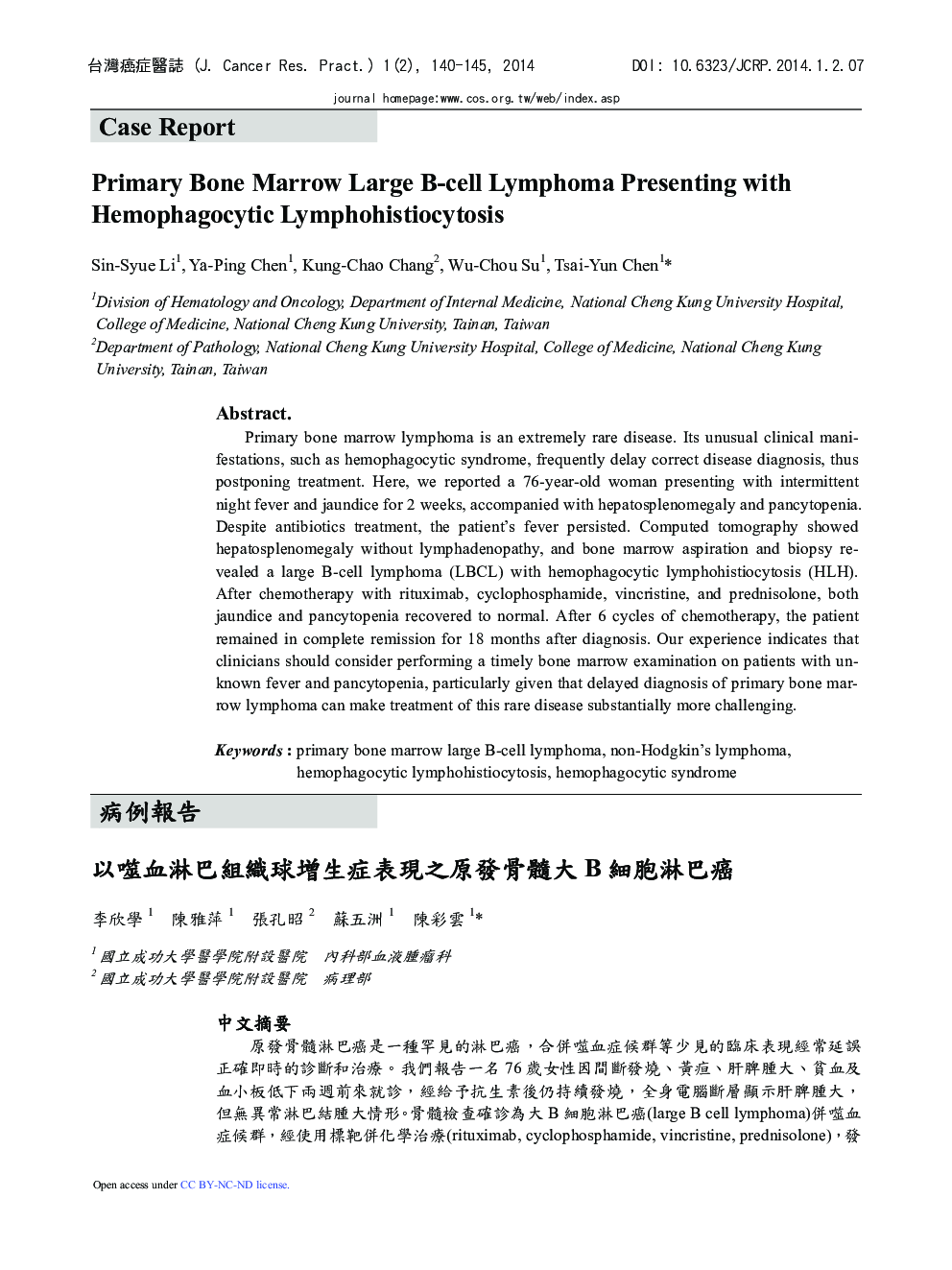| Article ID | Journal | Published Year | Pages | File Type |
|---|---|---|---|---|
| 3988814 | Journal of Cancer Research and Practice | 2014 | 6 Pages |
Primary bone marrow lymphoma is an extremely rare disease. Its unusual clinical manifestations, such as hemophagocytic syndrome, frequently delay correct disease diagnosis, thus postponing treatment. Here, we reported a 76-year-old woman presenting with intermittent night fever and jaundice for 2 weeks, accompanied with hepatosplenomegaly and pancytopenia. Despite antibiotics treatment, the patient's fever persisted. Computed tomography showed hepatosplenomegaly without lymphadenopathy, and bone marrow aspiration and biopsy revealed a large B-cell lymphoma (LBCL) with hemophagocytic lymphohistiocytosis (HLH). After chemotherapy with rituximab, cyclophosphamide, vincristine, and prednisolone, both jaundice and pancytopenia recovered to normal. After 6 cycles of chemotherapy, the patient remained in complete remission for 18 months after diagnosis. Our experience indicates that clinicians should consider performing a timely bone marrow examination on patients with unknown fever and pancytopenia, particularly given that delayed diagnosis of primary bone marrow lymphoma can make treatment of this rare disease substantially more challenging.
